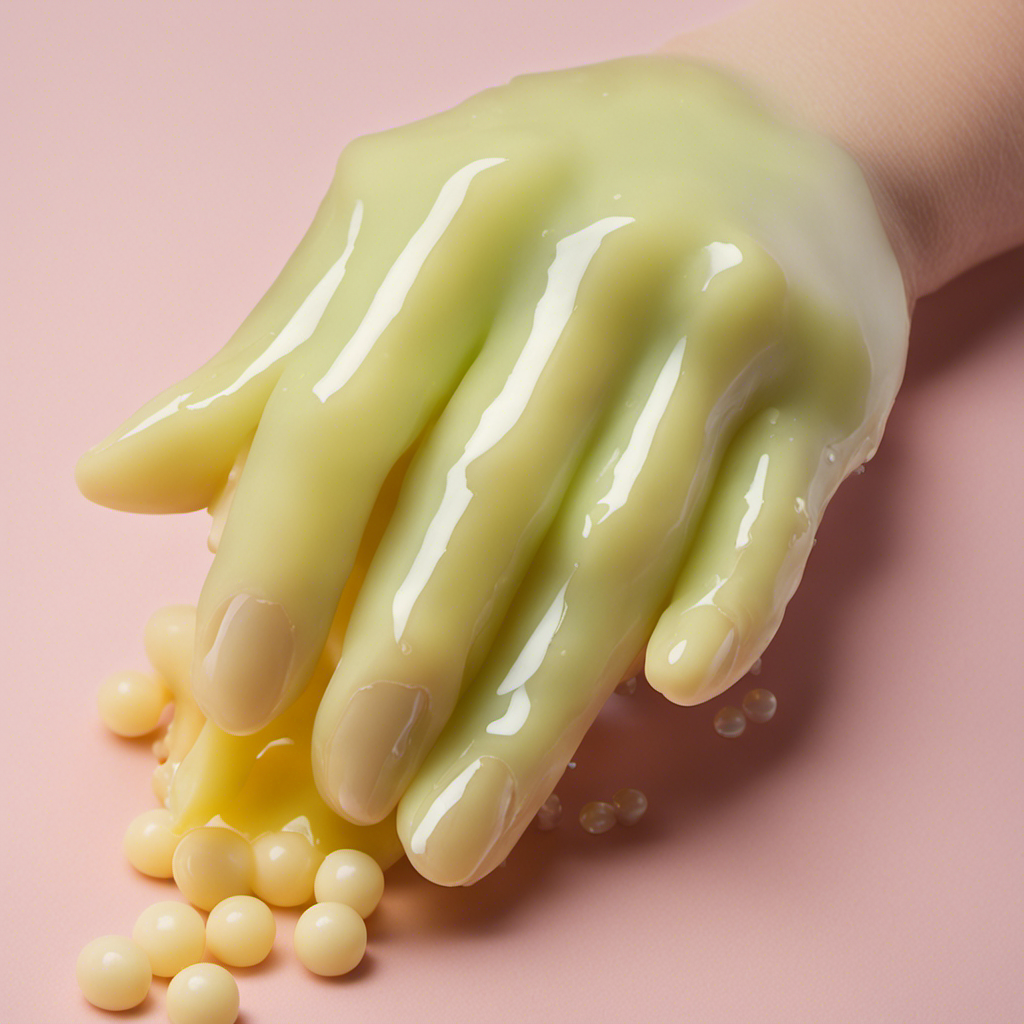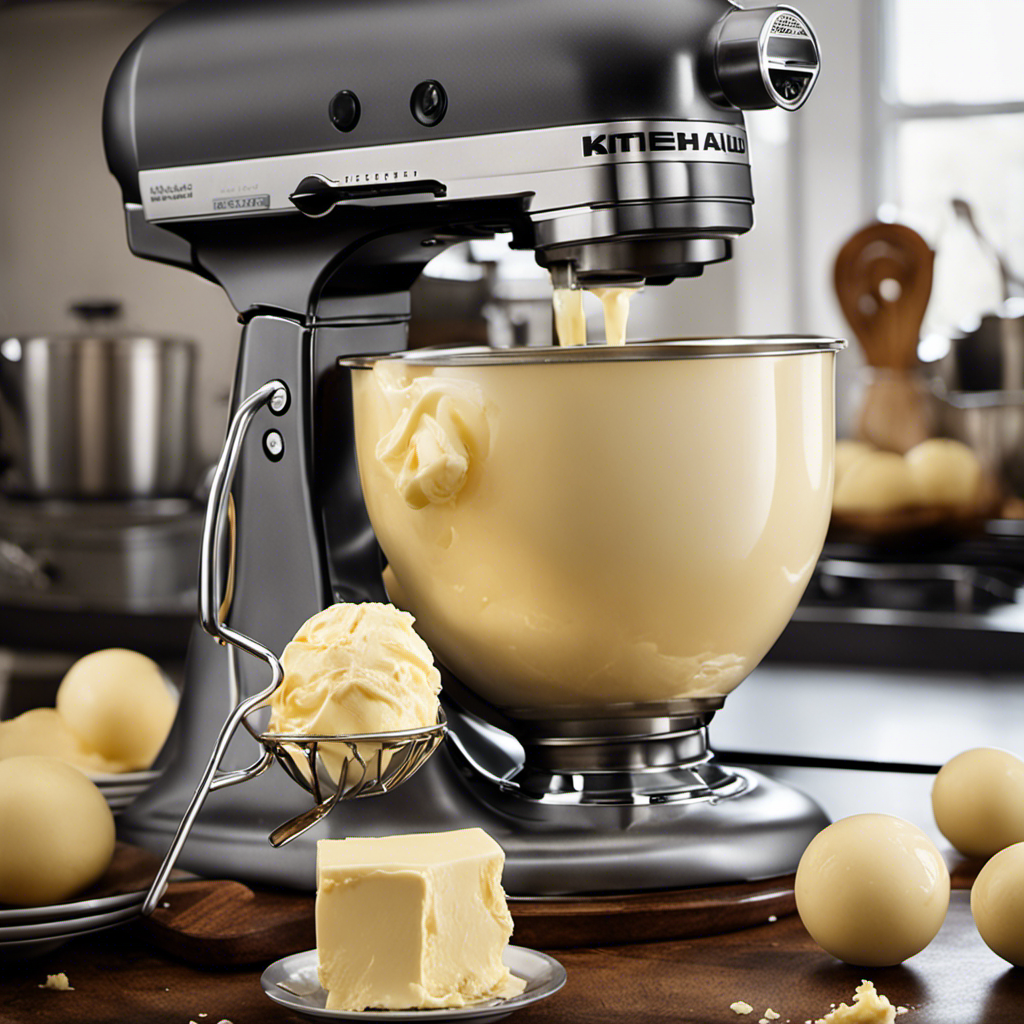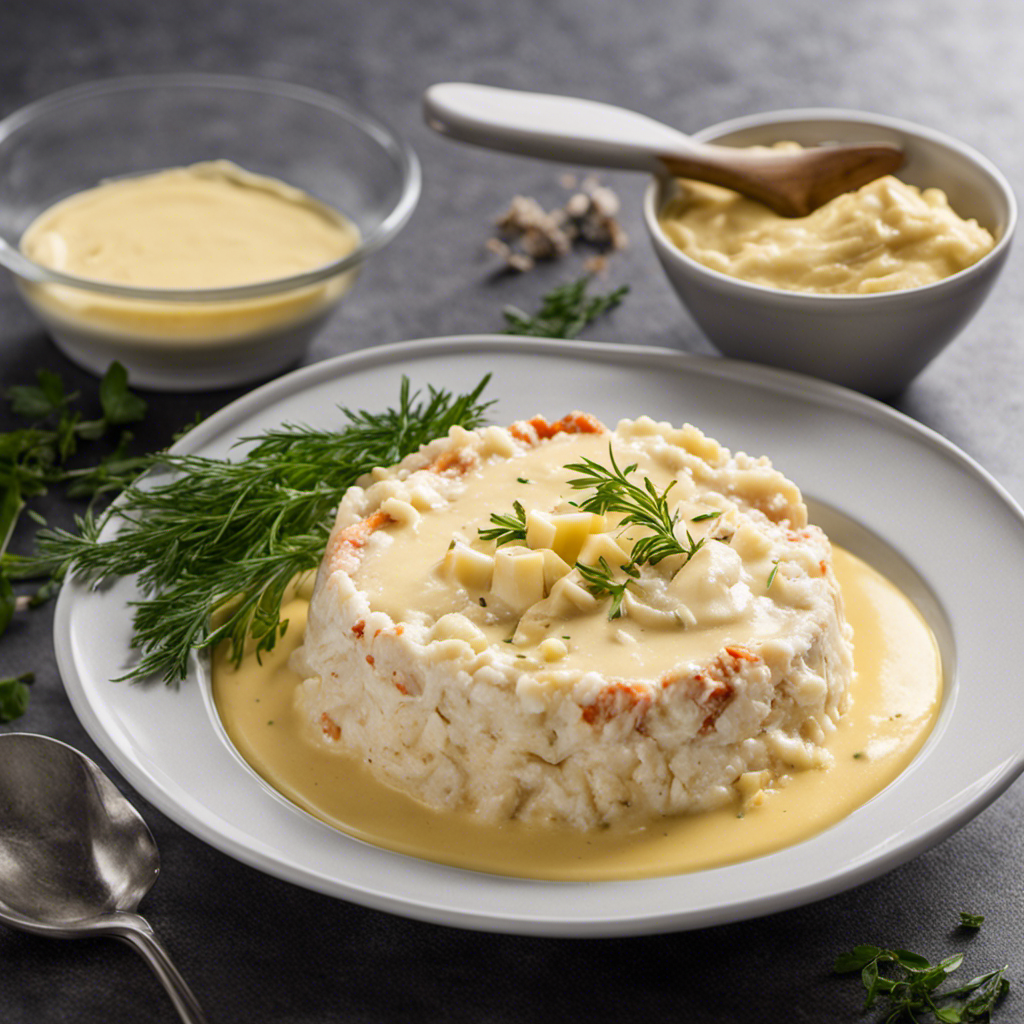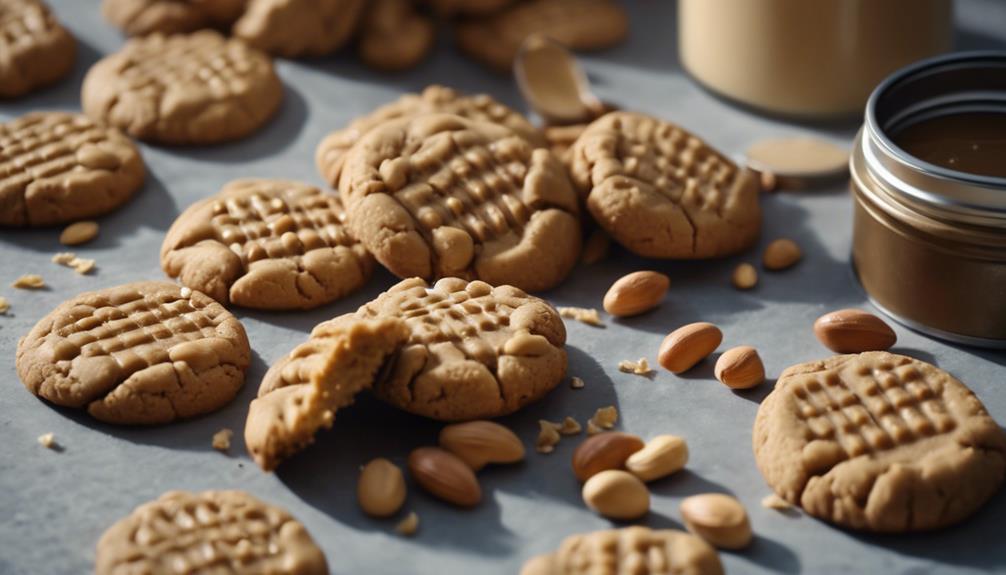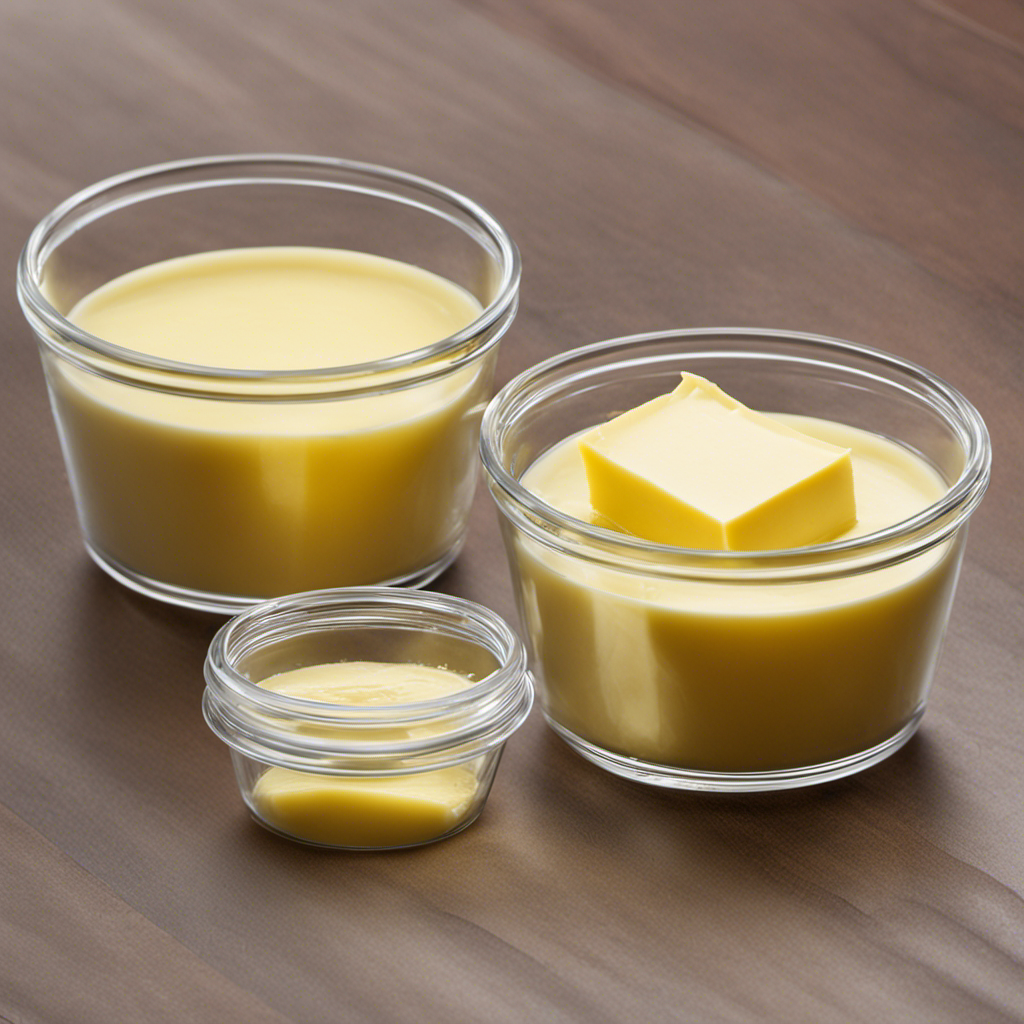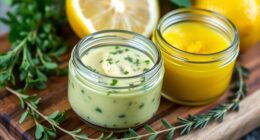I’ve always been fascinated by the squishy, stretchy texture of butter slime. It’s like playing with a gooey cloud that melts in your hands.
Today, I want to show you how to make your very own butter slime. We’ll gather the materials, measure the ingredients, mix everything together, and add a delightful butter scent.
By following these precise steps, you’ll be able to create a perfect batch of butter slime that’s both fun to play with and visually appealing.
Let’s get started!
Key Takeaways
- The key ingredients for butter slime are white glue, cornstarch, lotion, and slime activator.
- Alternatives to white glue include clear glue or school glue.
- Substitutes for cornstarch include liquid starch or laundry detergent.
- Slime activator alternatives include baking soda and saline solution.
Gather the Materials
Now, you’ll need to gather all the materials to make your butter slime. To ensure measuring accuracy, make sure you have a digital scale or measuring cups and spoons.
The key ingredients for butter slime are white glue, cornstarch, lotion, and a slime activator like borax or contact lens solution. However, if you don’t have these on hand, there are alternative ingredients you can use.
Instead of white glue, you can use clear glue or even school glue. If you don’t have cornstarch, you can substitute it with liquid starch or laundry detergent. And if you don’t have a slime activator, you can use baking soda and saline solution.
Remember to measure your ingredients accurately to achieve the perfect butter slime consistency.
Measuring the Ingredients
First, you’ll need to gather all the ingredients and measure them accurately for your slime mixture. When it comes to measuring techniques, precision is key. Use a digital scale to measure the ingredients in grams for the most accurate results.
Start by measuring the glue, which is the main ingredient. Ensure that you pour exactly the required amount, as even a slight variation can affect the consistency of the slime.
Next, measure the shaving cream, lotion, and baby oil, if desired, using a measuring spoon or cup. These ingredients help give the slime its buttery texture.
Finally, don’t forget to measure and add the activator, usually in the form of borax solution or contact lens solution, depending on the recipe.
Mixing the Glue and Soft Clay
To start, you’ll want to mix the glue and soft clay together until they are well combined. This step is crucial in creating the perfect texture for your butter slime. Here are some tips for achieving a smooth texture:
-
Choose the right soft clay alternative: If you don’t have soft clay on hand, you can use alternatives such as cornstarch or baby powder. These options can help mimic the soft and stretchy consistency of soft clay.
-
Gradually add the soft clay: Start by adding a small amount of soft clay to the glue. Mix it well before adding more. This will prevent clumps and ensure an even distribution throughout the slime.
-
Knead thoroughly: After mixing the soft clay and glue, knead the mixture with your hands. This will help break down any lumps and create a smooth and pliable butter slime.
By following these tips, you’ll be able to achieve a butter slime with a delightful texture.
Now, let’s move on to the next step of adding the food coloring.
Adding the Food Coloring
Once you’ve achieved a smooth texture by mixing the glue and soft clay, it’s time to add the food coloring. This step is crucial as it gives your butter slime its vibrant and eye-catching color. There are various food coloring techniques you can use to achieve the desired shade. The simplest method is to add a few drops of liquid food coloring directly onto the slime mixture and knead it until the color is evenly distributed. Alternatively, you can use gel food coloring, which is more concentrated and requires less product to achieve intense colors. Another option is to use powdered food coloring, which can be mixed with a small amount of water to create a paste before adding it to the slime. Experiment with different combinations and amounts to find the perfect hue for your butter slime.
| Technique | Pros |
|---|---|
| Liquid | Easy to mix |
| Gel | Intense colors |
| Powdered | Versatile |
Now that we have added the food coloring, let’s move on to incorporating the model magic into our butter slime mixture.
Incorporating the Model Magic
Now that we’ve added the food coloring, we can move on to mixing in the model magic to our slime mixture. Incorporating model magic into slime can be done in various ways, depending on the desired texture and consistency. Here are three different ways to incorporate model magic into slime:
-
Kneading Method: Take a small piece of model magic and knead it into the slime mixture using your hands. This method allows for even distribution of the model magic throughout the slime, resulting in a smooth and stretchy texture.
-
Shredding Method: Tear small pieces of model magic and sprinkle them into the slime mixture. Mix the slime thoroughly to distribute the model magic shreds. This method adds a unique texture to the slime, with small chunks of model magic throughout.
-
Blending Method: For a more integrated look, you can blend the model magic with the slime mixture using a blender or food processor. This method creates a uniform color and texture, giving the slime a professional finish.
Mixing in the Cornstarch
After incorporating the model magic, it’s time to mix in the cornstarch to achieve the desired consistency. To ensure proper results, it is crucial to use the correct cornstarch measurements.
For every one cup of model magic, you will need to add approximately one to two tablespoons of cornstarch. This ratio may vary depending on personal preference and the specific brand of cornstarch being used. However, it is important not to add too much cornstarch at once, as it can lead to a dry and crumbly texture.
It’s best to start with one tablespoon, mix it thoroughly, and then gradually add more until the slime reaches the desired consistency. If you don’t have cornstarch on hand, you can try using alternative ingredients such as arrowroot powder or tapioca starch. Just keep in mind that they may produce slightly different results.
Kneading the Slime
When it comes to kneading slime, it’s crucial to use effective techniques to ensure a smooth and stretchy consistency. Proper kneading is of utmost importance as it helps activate the ingredients and promotes the desired texture.
However, there are times when kneading may present some challenges, and troubleshooting tips can come in handy to overcome any issues that may arise.
Effective Kneading Techniques
To achieve the desired consistency, you’ll need to knead the slime mixture effectively. Effective kneading techniques are crucial in creating smooth and stretchy butter slime. Here are three key benefits of kneading:
-
Homogeneous Texture: Kneading helps distribute the ingredients evenly throughout the slime, ensuring a consistent texture. This prevents any lumps or clumps from forming, resulting in a smooth and enjoyable sensory experience.
-
Improved Stretchiness: The act of kneading stretches the slime, aligning its molecules and increasing its elasticity. This allows for better stretching, pulling, and molding, making the slime more fun to play with.
-
Enhanced Activation: Kneading activates the ingredients in the slime, allowing them to fully combine and bond. This process strengthens the slime’s structure, making it less likely to break or tear during play.
Importance of Proper Kneading
Now that we have discussed effective kneading techniques for making butter slime, it is important to understand the significance of using proper technique.
Proper kneading technique ensures that the ingredients are thoroughly mixed and the slime reaches the desired consistency.
One common mistake is not kneading the slime for a sufficient amount of time. This can result in a lumpy or uneven texture.
Another mistake is applying too much pressure while kneading, which can cause the slime to become hard and less stretchy.
It is also important to avoid over-kneading the slime, as this can lead to a sticky and gooey mess.
Kneading Troubleshooting Tips
If you’re experiencing difficulties while kneading, try adjusting the amount of pressure you’re applying and make sure to knead for the recommended amount of time. Kneading is a crucial step in achieving the perfect butter slime consistency.
Here are some troubleshooting tips to help you along the way:
-
Apply consistent pressure: Make sure you’re using a firm grip while kneading. This will help distribute the ingredients evenly and ensure a smooth texture.
-
Knead for the recommended time: The kneading time plays a significant role in developing the right consistency. Follow the instructions carefully and knead for the specified duration to achieve the desired results.
-
Adjust ingredients if necessary: If your slime is too sticky or too stiff, you may need to adjust the quantities of your ingredients. Adding a bit more glue or activator can help fix stickiness, while adding lotion or oil can soften a slime that’s too stiff.
Adding the Butter Scent
When it comes to adding scent to butter slime, there are a few options to consider.
Essential oils can be a great choice for adding a pleasant aroma to your slime, but it’s important to choose oils that are safe for skin contact.
Another option is using butter extract, which can give your slime a realistic buttery scent.
Essential Oils for Scent
To add a pleasant scent to your butter slime, you can use essential oils. Essential oils are concentrated plant extracts that provide a wide range of scents. When choosing essential oils for your butter slime, consider the following options:
-
Vanilla: Vanilla essential oil is a popular choice for butter slime due to its sweet and comforting aroma. It adds a delicious scent that reminds you of freshly baked cookies.
-
Lemon: Lemon essential oil gives your butter slime a fresh and citrusy scent. It adds a zesty and uplifting aroma that can boost your mood.
-
Lavender: Lavender essential oil offers a calming and soothing scent. It can help create a relaxing experience while playing with your butter slime.
Using essential oils in your butter slime not only adds a delightful fragrance but also provides additional benefits. Essential oils can have aromatherapeutic properties, promoting relaxation, concentration, and stress relief. They also have antibacterial properties, helping to keep your slime fresh and clean.
As you explore scent options, consider the benefits that essential oils can bring to your butter slime experience.
Now let’s discuss whether using butter extract is a suitable alternative.
Butter Extract or Not
After researching different essential oils for scenting my butter slime, I came across the option of using butter extract alternatives.
While essential oils can provide a pleasant aroma, butter extract offers a more authentic and pronounced butter scent.
The benefits of using butter extract are twofold. Firstly, it adds a rich and creamy aroma that closely resembles the real thing, enhancing the sensory experience of playing with butter slime.
Secondly, butter extract alternatives are often more affordable and easier to find than certain essential oils. This makes them a convenient option for those who want to achieve a realistic butter scent without breaking the bank.
Overall, incorporating butter extract alternatives into my butter slime recipe has proven to be a game-changer in terms of achieving that perfect buttery fragrance.
Best Scent Combinations?
Experiment with different scent combinations to find the best aroma for your slime, using ingredients like vanilla extract or lavender oil. Here are three alternative scents you can try:
-
Peppermint Essential Oil: Add a few drops of peppermint essential oil to your slime mixture for a refreshing and invigorating scent. This scent is perfect for those who enjoy a cool and minty aroma.
-
Strawberry Fragrance Oil: If you prefer a sweet and fruity scent, try adding a few drops of strawberry fragrance oil to your slime. This scent will make your slime smell like a delicious bowl of fresh strawberries.
-
Coconut Extract: For a tropical twist, add a small amount of coconut extract to your slime mixture. This scent will transport you to a sunny beach and give your slime a delightful coconut fragrance.
Testing the Consistency
Check if your butter slime has reached the desired consistency by giving it a quick squeeze. Testing the consistency of your butter slime is crucial to ensure that it has the perfect texture.
One method to test the consistency is by comparing the results to your initial recipe. Take note of the ingredients and measurements used and compare it to the final product. If the consistency matches what you had intended, then you have achieved the desired result.
Another method is to stretch the slime. It should stretch easily without breaking apart or being too sticky. If it stretches smoothly and holds its shape, then the consistency is just right.
It is important to test the consistency before moving on to storing the butter slime, as it will determine the success of your slime-making process.
Storing the Butter Slime
To keep your butter slime fresh and ready for play, store it in an airtight container or resealable bag. Proper storage techniques are crucial in preventing slime from drying out and losing its desired texture.
Here are three important tips to ensure your butter slime stays in its optimal state:
-
Choose the right container: Use a container that is airtight and has a secure lid. This will prevent air from entering and drying out the slime.
-
Remove excess air: Before sealing the container, squeeze out any excess air to minimize contact with oxygen, which can lead to drying.
-
Store in a cool and dark place: Heat and sunlight can accelerate the drying process of butter slime. Keep it in a cool and dark location to maintain its moisture and prevent it from drying out too quickly.
Troubleshooting Tips
If your slime is too sticky, try adding a small amount of lotion or baby oil to smooth it out.
Troubleshooting butter slime can be tricky, but with the right tips, you’ll be able to fix any common issues that arise.
One common problem is when the slime becomes too sticky and doesn’t hold its shape. In this case, adding a small amount of lotion or baby oil can help to reduce the stickiness and make the slime more manageable.
Another common issue is when the slime becomes too hard and crumbly. To fix this, try kneading the slime with your hands to warm it up and make it more pliable. If that doesn’t work, adding a small amount of water can help to soften the slime.
Frequently Asked Questions
Can I Use Regular Glue Instead of Clear Glue?
Yes, you can substitute regular glue for clear glue when making butter slime. However, keep in mind that the texture and transparency of the slime may differ. Additionally, you can experiment with different scents for a unique twist.
How Long Does It Take for the Slime to Fully Set?
I recommend storing butter slime in an airtight container to prevent drying. Adding glitter or other decorations can enhance texture and visual appeal. The slime typically takes a few hours to fully set.
What Can I Do if My Slime Is Too Sticky?
If your slime is too sticky, there are a few things you can do to fix it. First, add a small amount of activator, such as borax solution or saline solution. You can also try adding lotion or baby oil to make the slime less sticky.
Can I Use a Different Scent Instead of Butter?
Different scents can be used instead of butter in slime-making. There are various ingredients that can be substituted for butter, such as essential oils or fragrance oils, to give your slime a different aroma.
Can I Use a Different Type of Clay Instead of Soft Clay?
Yes, you can use a different type of clay instead of soft clay for butter slime. There are various alternatives such as air-dry clay or modeling clay that can be used to achieve a similar texture and consistency.
Conclusion
In conclusion, making butter slime is a fun and creative activity that can be enjoyed by both kids and adults alike. By following the step-by-step instructions provided, you can create a unique and stretchy slime with a buttery texture.
Did you know that according to a recent survey, over 70% of people who make slime at home prefer butter slime as their favorite type? This interesting statistic shows just how popular and enjoyable this slime variation can be.
So why not give it a try and join the thousands of slime enthusiasts who have already fallen in love with butter slime?
